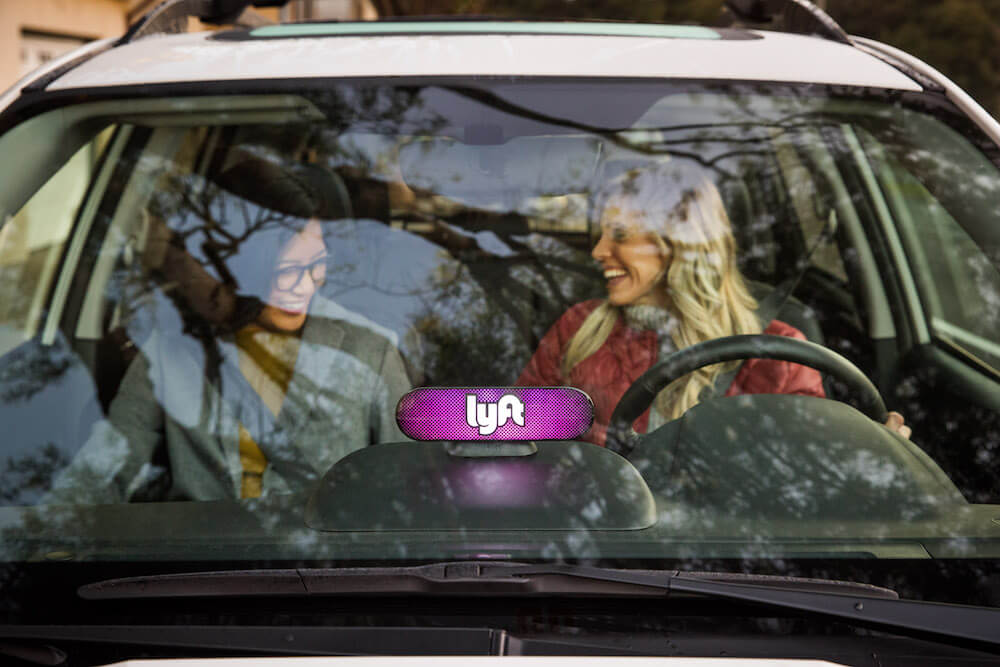For any emerging business, the challenge of chasing down and overtaking the industry leader can seem daunting. It can seem near impossible when the industry leader’s name has been adopted as a verb in everyday language. As in, “Can you Xerox these documents for me?”
So, when Lyft set out to challenge in the ride-sharing market against the name-as-a-verb goliath Uber, few gave them much of chance of making significant inroads. But after steady growth from Lyft and a disastrous PR year in 2017 for Uber, this is shaping up to be a solid two-horse race. And there is some hard evidence to support this view. Since 2015, Uber’s share of the ride-share market has dropped from 90% to 75%, according to TXN Solutions, company that tracks consumer trends.
Some are even more bullish on Lyft’s prospects. Fortune Magazine quoted an anonymous executive within the automotive industry who believes the trend towards Lyft is only going to continue.
“All it takes is one more issue before momentum is completely shifted,” the source said. “We’ve had internal discussions, and we don’t think Uber is a major player after 2020.”
Room For Two at the Top
It remains to be seen whether or not there is enough room in the ride-sharing market for both Lyft and Uber. History has plenty of examples where the industry titans clashed and they both survived. In the early 1980’s, Coke and Pepsi engaged in the “cola war” and despite significant self-inflicted wounds on both parts (New Coke, Crystal Pepsi) both continue to co-exist today.
However, Lyft may be eyeing the example of VHS video cassettes which went head to head with Sony Betamax to be the dominant home video format through the 80’s. In that case, Betamax had a similar position as Uber today. They were out first and were deemed to be the superior product. Beta cassettes could be paused and run in slow-motion with perfectly clear frames whereas the VHS format would leave squiggly lines.
But with the launch of HBO and other premium cable movie channels which could run films unedited without commercials, there was a demand for videocassettes that could tape full-length movies. The early versions of Betamax tapes could only record for one hour per cassette. VHS could be set to record for 4-6 hours per cassette. VHS then took the lead position in getting movie studios to release home video copies on their format. By the end of the decade, VHS was the clear leader and within a few years into the 1990’s, Betamax had been relegated to industrial use only.
Formed With A Purpose
Since its launch, Lyft is now available in 350 cities and has given more than 400 million rides. Not bad for a couple of guys who bonded over a mutual passion for making the world a better place through transportation.
Lyft is the brainchild of Logan Green and John Zimmer, two young men who grew up on opposite coasts but shared a common vision. Green grew up in Los Angeles where gridlock traffic was just a way of life. It was on a trip to Zimbabwe when he was stuck with inspiration. He saw how they used mini-busses as a hybrid between public transportation and a private taxi service. He thought the model would work for a car-pooling service for college students to go home during peak travel times. He went on to call his company “Zimride” after the place that gave him the idea.
Zimmer grew up in New York studied the hotel and hospitality business while in university. When he applied a hotel’s vacancy rate formula to cars, he was struck by how inefficient car ownership was. A car owner only uses the vehicle 4% of the time.
“It’s a horrible occupancy rate at a high cost,” he once said. “I wanted to create a better transportation hotel.”
While looking for ways to introduce a more efficient model, he discovered something on Facebook called Zimride. He reached out Green and the two decided to team up to launch the company. In time, they would sell Zimride to Enterprise Holdings and focus their attention on a ride-sharing idea they called Lyft.
A Difference in Company Culture
From the very beginning, Lyft was created with a softer, more feel-good corporate culture than Uber. Green and Zimmer wanted Lyft to be a service that would benefit communities and was one that customers could feel good about using. To underscore this culture, Lyft drivers would often arrive wearing pink fuzzy mustaches and would fist-bump customers when they got in the car.
Uber, on the other hand, was created to be a luxury brand. They wanted to make it more accessible for people to arrive at functions or social outings in the upscale black vehicles usually only available to the upper-income bracket. Over time, Uber and Lyft seemed to fall into a bad cop-good cop dynamic. A situation that only served to infuriate Uber. In an article, Ezra Klein explains why.
‘To Uber, Lyft’s business model was maddening. It took an Uber to pound through the regulations, to take the risks, to build the future. Then Lyft rolled behind with its dumb mustaches and friendly PR operation and did much of what Uber did without incurring the reputational cost.”
One could make a strong case that Uber has only themselves to blame for their PR troubles. In July of 2017, co-founder and former CEO Travis Kalanick was forced to resign after a series of public relations headaches that continuously painted the company in a negative light. These ranged from systemic sexual harassment complaints, allegations of stolen Intellectual Property, and even allegations of psychologically manipulating drivers to the company’s benefit.
The Next Great Battleground
Just as recording duration proved to be the deciding factor in VHS overtaking Betamax, there is a looming sector that may turn out to be crucial in determining who emerges victorious in the ride-sharing battle. With an eye to the future, Lyft is making a serious play at introducing antonymous vehicles part of their fleet.
In 2016 Lyft struck a deal with General Motors to work together on autonomous vehicles. They have similar deals with NuTonomy and Waymo. Waymo just happens to be the company that is suing Uber for stealing their IP. Unlike Uber which wants to manufacture autonomous vehicles, Lyft is working on technology that will allow any vehicle to be transformed into a self-driving car.
“Lyft has never built a car, and we never will,” Lyft Director of Product Taggart Matthiesen said.
There is no question the first company to be able to run cars on the road without having to pay for drivers will find themselves in the…well…driver’s seat.
The Road Ahead
While Uber still has a healthy lead on Lyft, recent figures seem to indicate Lyft is doing the right things to close the gap. Not only did they grow revenue by $1 billion in 2017, their Q4 revenue exceeded Uber’s by 275%
In a March 2018 article by Tech Crunch, “Lyft says it’s still doing more than 10 million rides per week across the platform, and it says the quarter ending on March 31st will also likely be its 20th consecutive quarter with more than 100 percent year-over-year revenue growth.”
These numbers are certainly impressive but are they enough to make Lyft the VHS to Uber’s Betamax or will they be resigned to playing the role of Pepsi, a solid and respectable number two.
Only time will tell.

